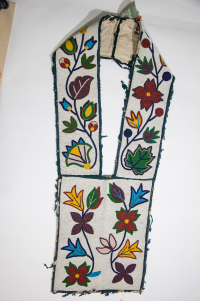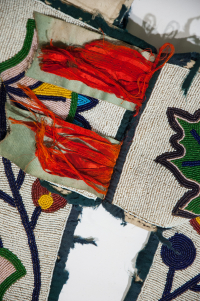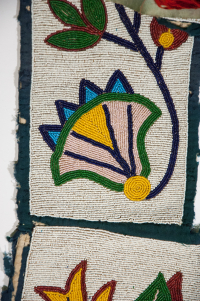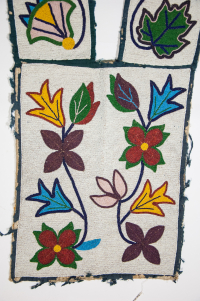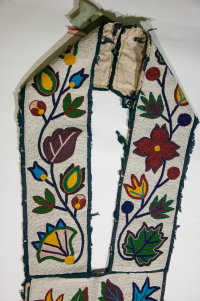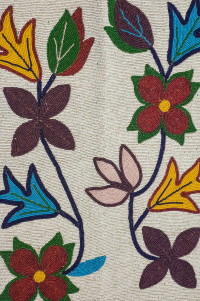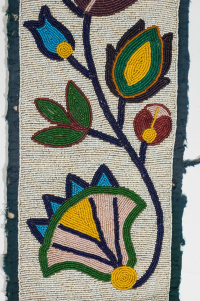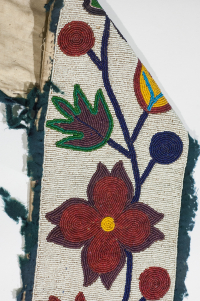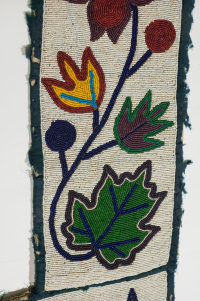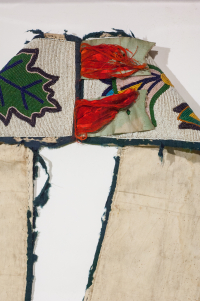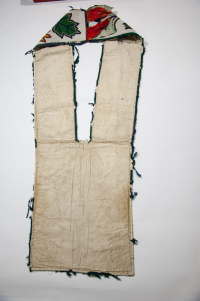Bandolier bag
Bandolier bag
Bandolier bag
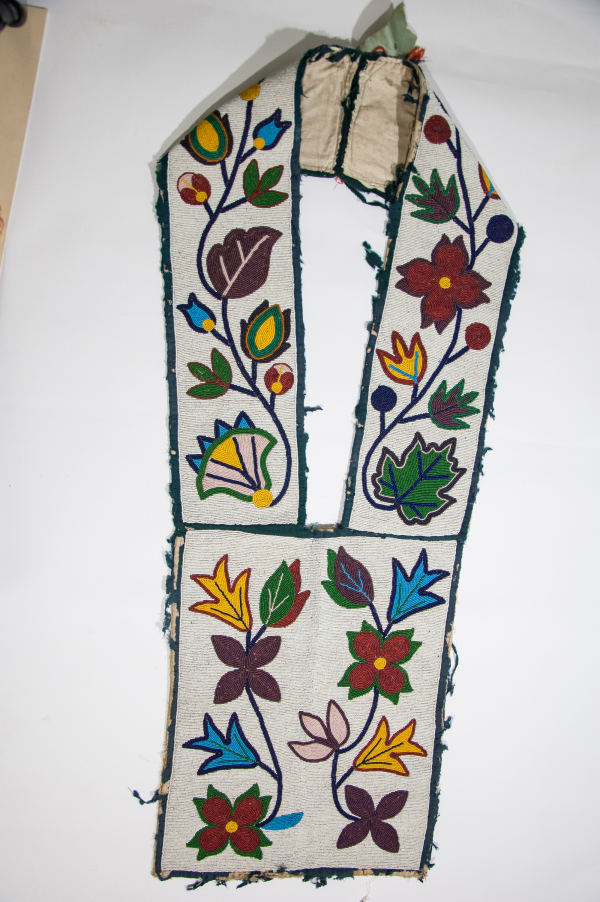
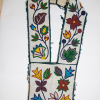
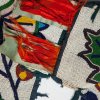
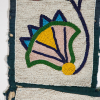
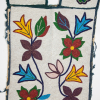
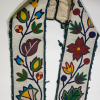
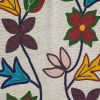
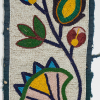
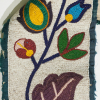
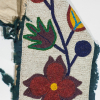

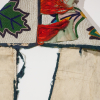
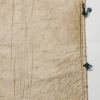
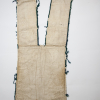
Overlay stitched beadwork, floral, stem and leaf design on a white field, blue bias tape edging, pocket non-functional
Also attributed to Saulteaux cultural type
Summarized from catalogue records
Read More About This Relative
Fabric, cotton, white; Fabric, burlap; Binding tape, cotton, dark teal; Ribbon, satin, green (light seafoam); Ribbon, silk, red; Seed beads, glass, opaque white, red (opaque dusty rose, transparent rose), orange (opaque marigold), yellow (opaque medium yellow), green (opaque emerald, transparent teal), blue (opaque cerulean, opaque navy), purple (transparent grape, transparent eggplant).
Hand sewn four layers white cotton with layer of burlap between as reinforcement, Edged in blue cotton, Top of strap finished with blue edging material, and two pieces green satin ribbon
overlaid by two pieces red silk ribbon, Overlay stitched translucent beads.
Multi-coloured curvilinear floral asymmetrical design, Floral stem and leaf; Lanceolate leaf; Ragged leaf; 4-petalled flower; Bell shaped flower?; Bud?.
"Bandolier bags most likely originated in the Upper Great Lakes region during the 1840s and 1850s. Fashioned exclusively from European materials and adorned with thousands of beads, bandolier bags were primarily for show, as a symbol of identity, wealth and status. Although initially functional, by the late 19th and early 20th centuries many of the bags had false pockets or none at all. Sometimes called "friendship bags", they were often created as gifts to strengthen relationships within communities or between nations. By the 1870s they had become an important element of formal dress worn mainly at ceremonies and celebrations by men, and occasionally by women. They wore them - singly or several at a time - crossed over the torso or draped around the neck. The wearing of more than one bag was generally the prerogative of a leader or a person of high honour." (McCord, 2013)
Provenance
McCord Museum. Wearing Our Identity. Montreal: The McCord Museum, 2013. Print.
McCord Museum. Wearing Our Identity. Montreal: The McCord Museum, 2013. Print.
About This GRASAC Record
Manitoba Museum
Content from the Manitoba Museum's catalog records. Uploaded by Orvis Starkweather as part of their summer internship.













attributed in catalogue records to Northeast Great Lakes-Riverine Geo-Cultural area
 Knowledge Sharing Platform
Knowledge Sharing Platform

